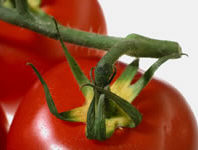Pocket K No. 12: Delayed Ripening Technology
| |
|
Ripening is a normal phase in the maturation process of fruits and vegetables. Upon its onset, it only takes about a few days before the fruit or vegetable is considered inedible. This unavoidable process brings significant losses to both farmers and consumers alike.
Scientists have been working to delay fruit ripening so that farmers will have the flexibility in marketing their goods and ensure consumers of “fresh-from-the-garden” produce.
The Fruit Ripening Process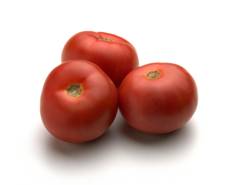
Ethylene is a natural plant hormone associated with growth, development, ripening and aging of many plants. This phytohormone is said to promote ripening in a variety of fruits including bananas, pineapples, tomatoes, mangoes, melons, and papayas. It is produced in varying quantities depending on the type of fruit. But when the concentration of ethylene reaches 0.1-1.0 ppm (parts per million), the ripening process in climacteric fruits is considered irreversible.
Climacteric fruits are usually harvested once they have reached maturity which then undergoes rapid ripening during transit and storage. Important tropical fruits such as banana, mango, papaya, pineapple and guava are examples of these fruits. Non-climacteric fruits do not ripen after harvest. Thus, in order to attain full ripeness and flavor, these fruits such as strawberries and oranges, are often harvested once they have fully ripened.
In tomatoes, it takes about 45-55 days for the fruit to reach full maturity. After which, it starts to undergo the ripening process. The production of ethylene within the fruit in turn signals the activity of different enzymes resulting in physiological changes such as change of color from green to red, softening of the fruit, and development of its distinct taste and aroma.
Normally, farmers pick their produce while they are still green. The ripening process is then induced by spraying the fruits or vegetables with ethylene gas when they reach their destination. For long hauls, fruits and vegetables are refrigerated to prevent damage and delay ripening.
However, there are drawbacks to these post harvest practices. Fruits that have been harvested prematurely may result in poor taste and quality despite appearing as fully ripened ones. Fruits transported for long periods under refrigeration also have the tendency to lose their quality.
Controlling the Ripening Process
There are several ways by which scientists can control the ripening process by genetic modification.
Regulation of Ethylene Production
The amount of ethylene produced can be controlled primarily by “switching off” or decreasing the production of ethylene in the fruit and there are several ways to do this. They include:
a. Suppression of ACC synthase gene expression.ACC (1-aminocyclopropane-1-carboxylic acid) synthase is the enzyme responsible for the conversion of S-adenosylmethionine (SAM) to ACC; the second to the last step in ethylene biosynthesis. Enzyme expression is hindered when an antisense (“mirror-image”) or truncated copy of the synthase gene is inserted into the plant’s genome.
b. Insertion of the ACC deaminase gene.The gene coding for the enzyme is obtained from Pseudomonas chlororaphis, a common nonpathogenic soil bacterium. It converts ACC to a different compound thereby reducing the amount of ACC available for ethylene production.
c. Insertion of the SAM hydrolase gene.This approach is similar to ACC deaminase wherein ethylene production is hindered when the amount of its precursor metabolite is reduced; in this case, SAM is converted to homoserine. The gene coding for the enzyme is obtained from E. coli T3 bacteriophage.
d. Suppression of ACC oxidase gene expression. ACC oxidase is the enzyme which catalyzes the oxidation of ACC to ethylene, the last step in the ethylene biosynthetic pathway. Through anti-sense technology, down regulation of the ACC oxidase gene results in the suppression of ethylene production, thereby delaying fruit ripening.
Control of Ethylene Perception
Since ethylene signals the onset of fruit ripening, delayed ripening on some plants can be achieved by modifying their ethylene receptors. The gene ETR1 is one example, and it has been shown to encode an ethylene binding protein. Plants with modified ETR1 lack the ability to respond to ethylene.
Suppression of Polygalacturonase Activity
Polygalacturonase (PG) is the enzyme responsible for the breakdown of pectin, the substance that maintains the integrity of plant cell walls. Pectin breakdown occurs at the start of the ripening process resulting in the softening of the fruit. To produce a fruit with DR trait using this method, scientists insert an anti-sense or a truncated copy of the PG gene into the plant’s genome resulting in a dramatic reduction of the amount of PG enzyme produced thereby delaying pectin degradation.
Advantages of DR Technology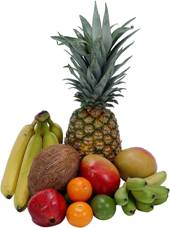
The increased shelf life of products offers several advantages to both producers and consumers:
- Assurance of top quality fruits and vegetables on the market. Farmers can now wait for the fruits and vegetables to attain full maturity before they are plucked from their vines thereby allowing the fruits to exude full quality. Consumers will get value for their money.
- Widening of market opportunities for farmers as their produce can now be transported for longer periods of time, some of which would not even require refrigeration.
- Reduction in postharvest losses. DR fruits do not go soft easily compared to conventional ones and are therefore more resilient to damage during handling and transportation. This ensures a significant percentage of the harvested fruits to end up on the market shelves.
- Extension in shelf life as fruits or vegetables as they stay fresher and nutritious for longer periods. These fruits will not easily go “over the hill”.
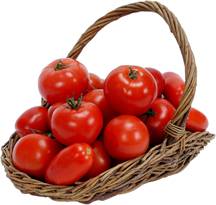
Safety Aspects of DR Technology
The first ever GM crop approved for marketing was the Flavr-SavrTM tomato produced by Calgene, Inc. (U.S.) in 1994. After thoroughly studying DR technology and its products, US regulatory agencies concluded that the DR technology is safe, it produces tomatoes that have the same nutritional composition as the conventional ones and that show no difference in levels of allergens or toxins compared to normal fruit. In addition, field trials have shown that the DR tomatoes do not pose any threat to other plants nor to any non-target organisms.
Other DR tomatoes that followed thereafter have also been granted deregulated status by regulatory agencies in several countries including the U.S., Canada, and Mexico. In 1996, the UK’s food safety regulators also gave their thumbs up to a DR tomato developed by Zeneca Seeds but it is not currently being sold in supermarkets.
A European First
On February 5, 1996, branches of Safeway and Sainsbury’s supermarkets throughout the UK started to sell tomato pureé made from genetically-modified tomatoes. This was the first time that food made from a GM organism had been sold in Europe.
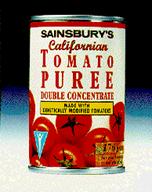 Labels on the cans clearly stated that the product had been made with GM tomatoes. Although there was no legal requirement to label the product, both supermarkets adopted an ‘open’ information policy from the start. For the inquisitive customer there was no shortage of information: leaflets were available describing the product, its benefits to the environment and consumer, the technology, and the regulatory processes through which the product had to pass.
Labels on the cans clearly stated that the product had been made with GM tomatoes. Although there was no legal requirement to label the product, both supermarkets adopted an ‘open’ information policy from the start. For the inquisitive customer there was no shortage of information: leaflets were available describing the product, its benefits to the environment and consumer, the technology, and the regulatory processes through which the product had to pass.
According to the supermarkets, sales in around 80 stores in which supplies were initially available were brisk. Figures indicated that once they bought the product, shoppers came back for more. In November 1997, Safeway Stores announced that they had sold three quarters of a million cans of the product, and that average sales per store of the modified tomato purée exceeded those of the conventional equivalent. One reason might have been the price: the new purée cost 29 pence for 170 grams while the traditional form cost slightly more: 29 pence for a mere 142 grams.
Both supermarket chains pledged that the new product would always be offered alongside its old-fashioned counterpart. This move pleased consumer groups, which had no objection to the purée, provided that it was safe to eat and that consumers were always given a choice.
However, commercial pressures generated by public concern about GM foods early in 1999 forced Sainsbury’s to announce that it would withdraw the product from sale. Stocks were exhausted by July 1999.
Source: http://www.ncbe.reading.ac.uk/NCBE/GMFOOD/tomato.html
Current Status of DR Technology
Delayed Ripening (DR) Technology has been applied for use in tomatoes, melons, and papaya. An interesting application of DR technology is in floriculture where experiments are underway to apply the technology to delay the withering of flowers.
In Southeast Asia, DR technology is being applied for use in papayas, a popular subsistence food and part of the general diet in the region. This technology could significantly increase the availability of this nutritious fruit to consumers and to small-scale and mostly resource-poor farmers in the region.
Regulatory approval of countries for crops with the DR trait
| Crop | Countries | Type of Approval |
| Carnation | Australia Norway | Cultivation Cultivation |
| Melon | USA | Food |
| Pineapple | USA | Food |
| Tomato | China Canada Mexico USA | Food, feed, cultivation Food Food Food, feed, cultivation |
Source: ISAAA GM Approval Database. https://www.isaaa.org/gmapprovaldatabase.
| |
References:
- Bleecker, A.B. and H. Kende. 2000. Ethylene: A Gaseous Signal Molecule in Plants. Annual Review Cell and Development Biology 16: 1-18.
- Catalytic Generators, Inc. n.d. Ethylene. http://catalyticigenerators/com/whatisethylene.html.
Essential Biosafety. 2002. Agriculture and Biotechnology Strategies, Inc. - Hautea, R., Y.K.Chan, S. Attathom, and A.F. Krattiger. 1999. The Papaya Biotechnology Network of Southeast Asia: Biosafety Considerations and Papaya Background Information. ISAAA Brief No. 11. ISAAA: Ithaca, NY.
- ISAAA. 2003. Papaya Biotechnology Network of South East Asia Report.
- PBS and ABSP II. 2004. Agricultural Biotechnology: Brief #3: What are GE Crops? http://absp2.cornell.edu/resources/briefs/documents/warp_briefs_eng_scr.pdf.
*Updated March 2020

